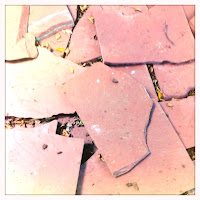 |
| Sungazer by William Turnbull |
My first full day in Leeds…
I woke up, walked through the city center
and left Leeds! No, I was not running far, I headed to YSP – Yorkshire
Sculpture Park. I walked from my new abode in Woodhouse and headed in to the
town center to get to the train station. Rather than ride down on my bike, I
wanted to walk the route first as I am absolutely terrified of the manic one
way system, the behemonth, the spiders web, that is, the Leeds ring road.
I ventured out, on a surprisingly sunny
day, and walked down Albion Street until I hit the station. Bought my ticket to
Wakefield Westgate, alighted there and walked the 5 or 6 minute walk to the bus station
where I had to get the bus to YSP. (For brevity’s sake I’ll leave out any
comments on Wakefield, but the city is undergoing something of a boost and I
plan on revisiting, lest not of all to see Chipperfiel’s Hepworth Wakefield
Gallery – one of the front runners for this years Stirling Prize– so check back
later in the year).
I arrived at the bus station, queued for 15
minutes only to be informed that I had just missed a bus, no you cant buy
tickets here, and the stand it went from was…she wasn’t sure. No matter! It’s a
wonderful warm day, I’m a pyschogeorapher at large…so I sat in the bus station
and read my book. I am a pyschogeographer who starts a two-year Masters next
week and one who has definitely not done enough reading….
When the bus did arrive (the no.96 to
Barnsley Interchangevia West Bretton) the bus driver, a rather robust fellow,
shouted (imagine hybrid Yorkshire/Lancashire accent)…
“NUHMBUH NIHHHHNTI SIHX
T’BAAAAHHHHRRRNSSLLLEH.”
Up I stepped: “Can I h…”
“YUHRRKSHIRE SCULPT’re PAHHHRK LUV?”
“Oh yes please!”
“H’DID I KNOW EH? THAT’S FUH QUID LUV”
This bus trip was quite simply one of the
best I’ve had in my life! My bus driver was Peter Kay! His best lines included “MY
WIHFE’D HAV SUPERMAN IN A HEALTH UN SAFETY CHECK. OFF HE’D GOHH AND ‘WOOOAH
WOOAH WOAAH – WE HAVEN’T DUN’RISKASSESMENT YET! BACK YUH COME”
Anyway! Eventually I am here! YSP!
 |
| Cascade Bridge at Yorkshire Sculpture Park |
YSP is a truly breathtaking experience – as
I walked around I couldn’t decide what was actually worth coming to see more;
the art or the Bretton Estate itself. Of course, I suppose the point is, that
one should come to see them both – the Bretton Estate is not a complete natural
country park, in most areas it is a actually an 18th to early 19th
century carefully contrived pleasure park following the lines popular
picturesque lines of landscape design.
 |
| View of the Lower Lake from Cascade Bridge |
As I walked across the Cascade Bridge and
along the route set out by the Upper Lake I had that feeling I can only
describe as “Fresh Air Breath.” That precise moment when you inhale fresh air
and simultaneously stumble upon a perfect scene. When you exhale you seem to be
at peace and exude happiness. There is nothing quite like it. This is the scene
I saw….
Due to my late arrival and schedule in the
evening, I was only at the park for a mere 3 and a half hours – I will be going
back, but take my advice – plan ahead, plan well, because you’ll need at least
a full day to do it all justice at a nice comfortable speed. Stay longer if you
can.
Below are some of my favourites from the
works I saw and some brief thoughts about them.
TREES by Dennis Oppenheim
As I came across this work I had to squint
my eyes and immediately broke out into a wide eyed smile…is that, a rubbish
bin?!?!? Trees is a witty and amusing installation that comments on the
creation of natural and man made environments and landscapes.
PROMENADE by Anthony Caro
This sculpture is unavoidable as one walks
down to the lake. The rhythm and movement on the pieces, steel painted grey,
are suggestive – the piece encourages the viewer to walk amongst its individual
pieces. Likewise the act of walking from one end of the sculpture to the other
is embedded in its title.
SPIEGELEI by Jem Finer
This work by the polymath Jem Finer is a
wonderful little creation situated on a footpath, tucked between main body of
the park, and the Lower Lake. The inverted camera obscura makes for an
interesting alternative view of the surrounding estate.
THE NOW AND KISS by Nigel Hall
I don’t know much about Nigel Hall but
these two pieces struck a cord with me. I liked their shape, their clear-cut
lines and boldness amongst the picturesque setting of the garden they were
situated in. There was even something faintly architectural in them for me, the
sense of balancing and equilibrium also.
RED SLATE LINE by Richard Long
I also saw Richard Long’s Red Slate Line…as
I was assessing the installation a woman arose out of the bushes and exclaimed
“Well I’m extremely disappointed!” It seems she was hoping for something a tad
more colossal. Yet, what is so poignant about Long’s work is not its scale or
need to impress – indeed the whole point about his work is subtlety. That his practice embraces the simple act of walking as
an art means that no material piece is going burst out of the hedgerows – it’s
not about scale or impression. Rather, in his own words, it is about “walking
and marking about place, locality, time, distance and measurement…the reality
of landscapes.”


























